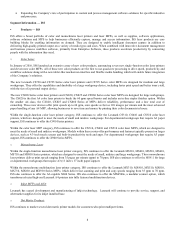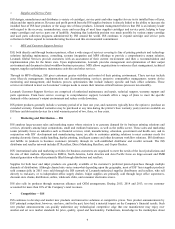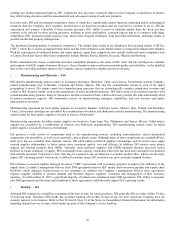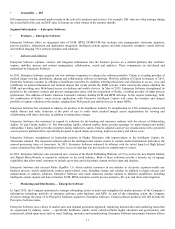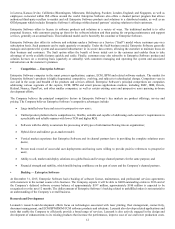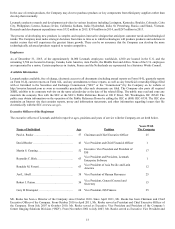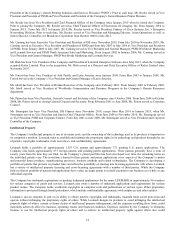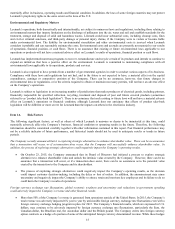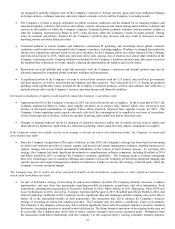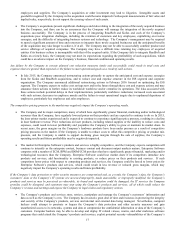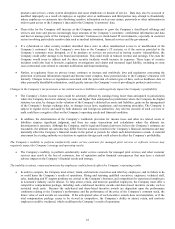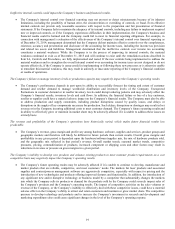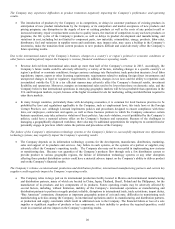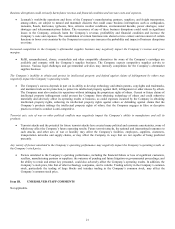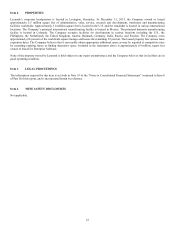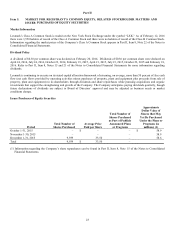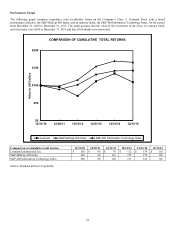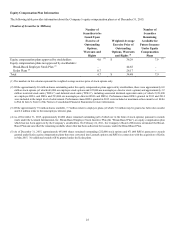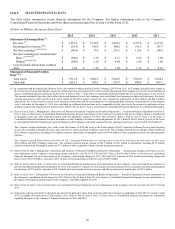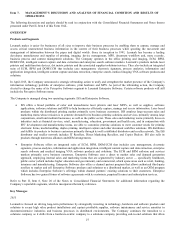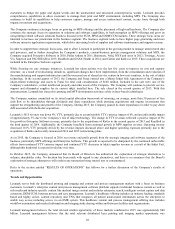Lexmark 2015 Annual Report Download - page 22
Download and view the complete annual report
Please find page 22 of the 2015 Lexmark annual report below. You can navigate through the pages in the report by either clicking on the pages listed below, or by using the keyword search tool below to find specific information within the annual report.18
products and services, create system disruptions and cause shutdowns or denials of service. Data may also be accessed or
modified improperly as a result of employee or supplier error or malfeasance and third parties may attempt to fraudulently
induce employees or customers into disclosing sensitive information such as user names, passwords or other information in
order to gain access to the Company’s data and/or the Company’s customers’ data.
These risks for the Company will increase as the Company continues to grow the Company’s cloud-based offerings and
services and store and process increasingly large amounts of the Company’s customers’ confidential information and data
and host or manage parts of the Company’s customers’ businesses in cloud-based IT environments, especially in customer
sectors involving particularly sensitive data such as medical information, financial services and the government.
If a cyberattack or other security incident described above were to allow unauthorized access to or modification of the
Company’s customers’ data, the Company’s own data or the Company’s IT systems, or if the services provided to the
Company’s customers were disrupted, or if its products or services are perceived as having security vulnerabilities, the
Company could suffer damage to its brand and reputation. This could result in reduced revenue and earnings. The costs the
Company would incur to address and fix these security incidents would increase its expenses. These types of security
incidents could also lead to lawsuits, regulatory investigations and claims and increased legal liability, including in some
cases contractual costs related to customer notification and fraud monitoring.
Further, as regulatory focus on privacy issues continues to increase and worldwide laws and regulations concerning the
protection of personal information expand and become more complex, these potential risks to the Company’s business will
intensify. Changes in laws or regulations associated with the protection of certain types of data, such as healthcare data or
other personally identifiable information, could greatly increase the Company’s cost of providing its products and services.
Changes in the Company’s tax provisions or tax related assets or liabilities could negatively impact the Company’s profitability.
The Company’s future income taxes could be adversely affected by earnings being lower than anticipated in jurisdictions
where the Company has lower statutory tax rates and higher than anticipated in jurisdictions where the Company has higher
statutory tax rates, by changes in the valuation of the Company’s deferred tax assets and liabilities, gains on the management
of the Company’s foreign exchange risks, or changes in tax laws, regulations, and accounting principles. The Company is
subject to regular review and audit by both domestic and foreign tax authorities. Any adverse outcome of such a review or
audit could have a negative effect on the Company’s operating results and financial condition.
In addition, the determination of the Company’s worldwide provision for income taxes and other tax related assets or
liabilities requires significant judgment, and there are many transactions and calculations where the ultimate tax
determination is uncertain. Although the Company, and its legal and financial advisors, believe the Company’s estimates are
reasonable, the ultimate tax outcome may differ from the amounts recorded in the Company’s financial statements and may
materially affect the Company’s financial results in the period or periods for which such determination is made. A material
assessment by a taxing authority or a decision to repatriate foreign cash could adversely affect the Company’s profitability.
The Company’s inability to perform satisfactorily under service contracts for managed print services or software services may
negatively impact the Company’s strategy and operating results.
The Company’s inability to perform satisfactorily under service contracts for managed print services and other customer
services may result in the loss of customers, loss of reputation and/or financial consequences that may have a material
adverse impact on the Company’s financial results and strategy.
The inability to attract, retain and motivate key employees could adversely affect the Company’s operating results.
In order to compete, the Company must attract, retain, and motivate executives and other key employees, and its failure to do
so could harm the Company’s results of operations. Hiring and retaining qualified executives, engineers, technical staff,
sales, marketing and IT support positions are critical to the Company’s business, and competition for experienced employees
in Lexmark’s industry can be intense. To help attract, retain, and motivate qualified employees, the Company must offer a
competitive compensation package, including cash, cash-based incentive awards and share-based incentive awards, such as
restricted stock units. Because the cash-based and share-based incentive awards are dependent upon the performance
conditions relating to the Company’s performance and the performance of the price of the Company’s common stock, the
future value of such awards are uncertain. If the anticipated value of such incentive awards does not materialize, or if the
total compensation package ceases to be viewed as competitive, the Company’s ability to attract, retain, and motivate
employees could be weakened, which could harm the Company’s results of operations.


